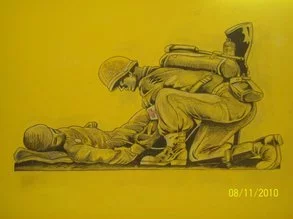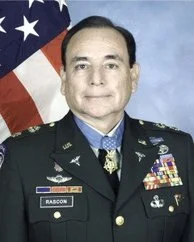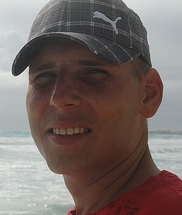
These are some of the most haunting two-syllable words the English language has ever produced. They have been screamed out by thousands of men and women across the battlefields of years past and will continue as long as man rules this planet.
It was an episode of “Band of Brothers” that first inspired me to want to be a medic. Maybe you’ve seen it. Episode six highlights the world in which Doc Roe lived during the fateful battle in the forests outside Bastogne. What amazed me most was watching how, when the shelling started and all the men of Easy Company were diving for their foxholes, Doc Roe was jumping out of his, running to the cries of “Medic!” and “Doc!” After seeing that, I was hooked. Becoming a medic was my purpose—my calling, if you will.

Now, I am no Doc Roe, friends. Though I have my share of fateful encounters and combat stories, and though I hope my work as a medic ranks on the good side, there are medics from across the decades that provide truly jaw-dropping inspiration. With that in mind, I want to showcase the actions of what were ordinary men (boys, really) who rose to accomplish the extraordinary. Their motivation was not for fame, riches, or glory, but simply for the love that is the brotherhood—a bond that defies reason and propels men to heroic feats beyond comprehension. Just maybe, one of these stories will provide the inspiration for America’s next generation of combat medics and corpsman, perhaps even one who will save your life or those of your children should they answer this nation’s call.

CPL Thomas J. Kelly—U.S. Army
Assigned as an aidman (medic) with the 1st Platoon, Charlie Company, with the 48th Armored Infantry Battalion, 7th ID, CPL Kelly and his platoon were performing a flanking maneuver, advancing down a small open valley near the town of Alemaert, Germany. This valley, overlooked by wooded slopes, was hiding enemy machine guns and tanks, which quickly attacked with murderous fire—inflicting heavy American casualties. Ordered to withdraw, CPL Kelly reached safety with the uninjured remnants of the unit. However, upon realizing the extent of his platoon’s casualties, he voluntarily retraced his steps and began evacuating his comrades under direct machine-gun fire.
He was forced to crawl, dragging the injured behind him for most of the 300 yards separating the exposed area from a place of comparative safety. Two other volunteers who attempted to negotiate the hazardous route with him were mortally wounded, but with complete disregard for his own life, he kept on with his Herculean task, dressing the wounded and carrying them to relative safety.
In all, he made 10 separate trips through the brutal fire, each time bringing out a man from what would have been certain death. In addition, he encouraged and guided seven more casualties who were able to crawl by themselves, aiding their escape from this hailstorm of fire.
After he had completed this heroic and completely self-imposed task, and while near collapse from fatigue, he refused to leave his platoon until the counterattack had resumed and the final objective was taken. CPL Kelly’s gallantry and intrepidity in the face of seemingly certain death saved the lives of many of his fellow soldiers and was a shining example of bravery under intense enemy fire.
For these incredible acts of courage, CPL Thomas Kelly was awarded the Congressional Medal of Honor.

HC3 William R. Charette—U.S. Navy
In the early morning hours, while participating in a fierce encounter with a cleverly concealed and well-entrenched enemy force occupying positions on a vital and bitterly contested outpost far in advance of the main line of resistance, HC3 Charette repeatedly and unhesitatingly moved about through a murderous barrage of hostile small-arms and mortar fire to render assistance to his wounded comrades.
When an enemy grenade landed within a few feet of a Marine he was attending, he immediately threw himself upon the stricken man and absorbed the entire concussion of the deadly missile with his body. Although sustaining painful facial wounds, and undergoing shock from the intensity of the blast—it ripped the helmet and medical aid kit from his person—Charette resourcefully improvised emergency bandages, tearing off part of his uniform and gallantly continued to administer medical aid to the wounded in his own unit as well as those in adjacent platoon areas.
Observing a seriously wounded comrade whose armored vest had been torn from his body by the blast of an exploding shell, Charette selflessly removed his own battle vest and placed it upon the helpless man, fully aware of the added danger to himself. Moving to the side of another casualty who was suffering excruciating pain from a serious leg wound, Charette stood upright in the trench line and exposed himself to a deadly barrage of enemy fire in order to lend more effective aid to the victim while he was evacuated to a position of safety. By way of his indomitable courage and inspiring efforts on behalf of his wounded comrades, Charette was directly responsible for saving many lives and was awarded the Congressional Medal of Honor

SPC Alfred Rascon—U.S. Army
Specialist Four Alfred Rascon distinguished himself by way of a series of extraordinarily courageous acts on 16 March, 1966, while assigned as a medic to the Headquarters Company, Reconnaissance Platoon, 1st Battalion (Airborne), 503rd Infantry, of the 173d Airborne Brigade. While moving to reinforce its sister battalion under intense enemy attack, his platoon came under heavy fire from a numerically superior enemy force. This intense enemy fire from crew-served weapons and grenades severely wounded several soldiers. Specialist Rascon, while ignoring commands to stay behind shelter until covering fire could be provided, bravely made his way forward.
He repeatedly tried to reach the severely wounded point machine-gunner laying on an open enemy trail, but was driven back each time by the withering fire. Disregarding his personal safety, he jumped to his feet, ignoring flying bullets and exploding grenades to reach his comrade. To protect him from further wounds, he intentionally placed his body between his casualty and the incoming enemy machine-gun fire, sustaining numerous shrapnel injuries and a serious wound to his hip. Disregarding his serious wounds, he then dragged the larger soldier from the kill zone.
Next, after hearing the second machine-gunner yell that he was running out of ammunition, SPC Rascon, under heavy enemy fire, crawled back to the wounded machine-gunner, stripping him of his bandoleers of ammunition, giving them to the operational machine-gunner, who was then able to continue his suppressive fire. Specialist Rascon, fearing the abandoned machine gun, its ammo, and spare barrel could fall into enemy hands, made his way to retrieve them. On the way, he was wounded in the face and torso by grenade fragments, but disregarded these wounds to recover the sensitive items, enabling another soldier to provide added suppressive fire to the pinned-down squad.
In searching for the wounded, he saw the point grenadier wounded by small-arms fire and grenades thrown at him. With continued disregard for his own life and his numerous critical wounds, SPC Rascon reached this casualty and quickly covered him with his body to absorb the blasts from exploding enemy grenades, saving this soldier’s life. In the process, SPC Rascon sustained additional wounds to his body.
While making his way to the wounded point squad leader, grenades were hurled at the sergeant. Again, in complete disregard for his own life, he reached and covered the sergeant with his body, absorbing the full force of the grenade explosions. Yet again, SPC Rascon was critically wounded by shrapnel, but without regard to his own wounds, he continued his search to aid the wounded. He remained on the battlefield, inspiring his fellow soldiers to continue the fight. After the enemy broke contact, he disregarded aid for himself, instead treating the wounded and directing their evacuation. Only after being placed on the evacuation helicopter did he allow aid to be adminstered to him.
For these heroic acts of valor and sacrifice, SPC Alfred Rascon was awarded the Congressional Medal of Honor.

Jaeson "Doc" Parsons
doc@graffitiofwar.com
Delivered by FeedBurner





Founder and CEO of The Graffiti of War Project, Doc is a decorated combat veteran of Operation Iraqi Freedom where he was a combat medic with the 54th Engineer Battalion. He is currently the a journalist for Force 12 Media and is featured weekly on SOFREP.com. Docas been featured in numerous media outlets such as Wired.com, Maxim.com and BusinessInsider.com. For more information about Jaeson “Doc” Parsons click HERE or send him an EMAIL.
RSS Feed
April 2023
March 2023
October 2020
June 2019
December 2018
November 2018
November 2016
April 2016
March 2016
February 2016
April 2015
May 2014
April 2013
October 2012
July 2012
December 2011
October 2011
September 2011
August 2011
July 2011
June 2011
May 2011
April 2011
March 2011
February 2011
January 2011
December 2010
November 2010
October 2010
July 2010
May 2010
April 2010
Copyright 2024 – The Graffiti of War Project